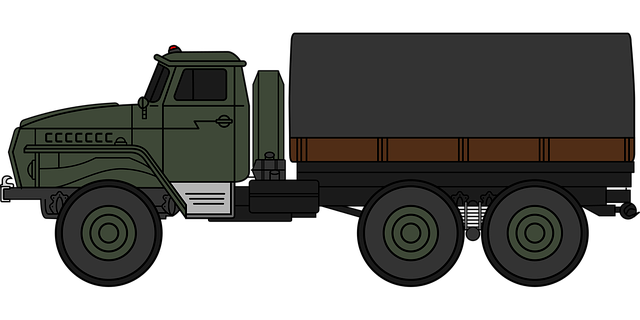Small fleet owners face unique challenges in obtaining liability insurance as their operations expand, requiring a deep understanding of specific risks like on-the-job accidents and third-party damage. The diverse nature of fleet operations necessitates tailored risk assessment and pricing models. Insurers offering competitive rates while ensuring adequate protection foster a thriving business ecosystem within budget constraints. By evaluating vehicle and driver risk levels, regular audits, and leveraging telematics data, small fleets can scale their insurance coverage strategically, staying informed about industry trends and regulatory shifts to optimize cost-efficiency and comprehensive risk management.
As small fleets grow, so does their exposure to risk. This article guides you through crafting a comprehensive strategy for scaling affordable small fleet liability insurance coverage. We’ll explore essential aspects like understanding unique liability needs, assessing growth-driven risk factors, and developing adaptable coverage solutions. Learn best practices for implementation and continuous optimization to ensure your fleet remains protected as it expands, all while managing costs effectively.
Understanding Small Fleet Liability Insurance Needs

Small fleet owners face unique challenges when it comes to liability insurance. As their operations grow, so does their exposure to risks. A comprehensive understanding of these risks is crucial in developing a scalable strategy for affordable coverage. Key considerations include identifying potential hazards specific to small fleets, such as on-the-job accidents involving multiple vehicles or third-party damage during loading and unloading processes.
Moreover, evaluating the diverse nature of fleet operations—from passenger transport to goods delivery—is essential. This enables tailored risk assessment and pricing models for small fleet liability insurance. By recognizing these nuances, insurers can offer competitive rates while ensuring adequate protection, fostering a robust ecosystem where businesses thrive while staying within budget constraints.
Assessing Growth and Risk Factors

As a small fleet grows, so do the complexities and risks associated with its operations. Assessing these growth factors is crucial for any strategic planning regarding affordable coverage. Business expansion often brings new challenges, from increased mileage to more diverse driving conditions and driver profiles. Each of these elements can impact insurance costs and risk levels. For instance, adding more vehicles and drivers raises the potential for accidents, while expanded operational hours could expose the fleet to different weather conditions, road hazards, or even higher rates of theft or vandalism.
Understanding these risk factors is vital when crafting a scaling strategy for small fleet liability insurance. By thoroughly evaluating the fleet’s current and projected operations, insurers can tailor coverage options to meet specific needs. This proactive approach ensures that as the fleet grows, so does the protection, maintaining affordable rates while mitigating potential losses.
Developing a Scalable Coverage Strategy

As your small fleet grows, so does the need for a scalable coverage strategy. This approach ensures that your insurance keeps pace with your operations, providing adequate protection without breaking the bank. One effective method is to assess risk levels of each vehicle and driver, tailoring policies accordingly. For instance, high-risk vehicles or drivers might require more stringent coverage, while lower-risk elements can be insured under less expensive plans. Regular fleet audits are crucial in this process; they help identify changing risk patterns, enabling dynamic adjustments to insurance strategies.
Additionally, exploring specialized small fleet liability insurance options can significantly enhance cost efficiency. These policies are designed specifically for the unique needs of smaller fleets, offering competitive rates and comprehensive coverage. By leveraging technology, such as telematics devices that monitor driving behavior, insurers can provide more personalized and affordable rates. This data-driven approach not only promotes safer driving practices but also contributes to a more sustainable scaling strategy for your insurance coverage.
Implementation and Continuous Optimization

As your small fleet grows, so does the complexity of managing risk and ensuring affordable coverage. Implement a strategic approach that aligns with your business goals. Start by assessing your current insurance needs, identifying potential gaps in coverage, and selecting policies tailored to your specific operations. Consider mutual or cooperative insurance options for cost savings, as these models are designed to benefit members, often resulting in competitive rates for small fleet liability insurance.
Regularly review and optimize your strategy to keep up with evolving business dynamics and risk profiles. Stay informed about industry trends, regulatory changes, and new coverage options. Engage with insurers to negotiate better terms and explore innovative solutions that offer enhanced protection without significantly impacting your budget. Continuous optimization ensures you maintain the right balance between cost-effectiveness and comprehensive risk management for your expanding fleet.
As your small fleet grows, so does your liability exposure. To ensure affordable coverage that scales with your business, it’s essential to assess growth drivers, identify risk factors, and develop a flexible strategy. Implement this plan swiftly and remain agile, continually optimizing based on performance data. By embracing proactive measures, you can maintain manageable insurance costs while safeguarding your fleet and business against potential risks. Remember, a well-tailored small fleet liability insurance strategy is the cornerstone of sustainable growth.
